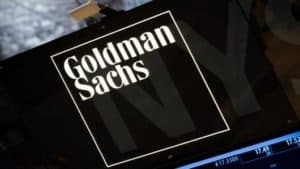 Goldman Sachs is to merge its investment banking and trading operations into one unit. The combined business will sit alongside two other divisions: one of which will absorb consumer banking arm Marcus into a new asset and wealth management arm, while the other will comprise transaction banking as well as the bank’s fintech platform portfolio, Apple and General Motors ventures, and recently acquired speciality lender GreenSky.
Goldman Sachs is to merge its investment banking and trading operations into one unit. The combined business will sit alongside two other divisions: one of which will absorb consumer banking arm Marcus into a new asset and wealth management arm, while the other will comprise transaction banking as well as the bank’s fintech platform portfolio, Apple and General Motors ventures, and recently acquired speciality lender GreenSky.
The move, which was reported by the Wall Street Journal on Sunday, is believed to be driven by a desire to boost fee-based business, while reducing reliance on the more volatile investment banking and trading revenues.
The bank saw trading revenues surge over 2020-21, delivering a strong performance, but slowed down significantly in Q4 2021 with a 13% drop in quarterly profit and a notable slowdown in equities trading resulting in equities revenue $300 million below the $2.42 billion estimated for the quarter.
The poor performance has continued into 2022 – the bank reported a 47% slump in profits for the second quarter, with net income falling from $.5.5 billion to $2.9 billion in comparison with the same period last year, thanks to a 41% drop in investment banking revenues.
CEO David Solomon’s surprise refit is designed to refocus attention on consumer banking business Marcus but is likely to ruffle a few feathers in the senior leadership team. It is not yet known how the changes will impact the executive suite, but co-head of trading Marc Nachmann is reportedly moving over to run the asset and wealth management arm. The bank is expected to formally announce the reshuffle within the next few days.
Goldman Sachs will release its Q3 earnings tomorrow (18 October) and is expected to underperform again, with estimates of a $2.77 billion net profit for the quarter – down from $5.38 billion the same time last year, driven by the ongoing slump in dealmaking which continues to hurt investment banking revenues.
Goldman Sachs declined to comment, when contacted by The TRADE for this story.